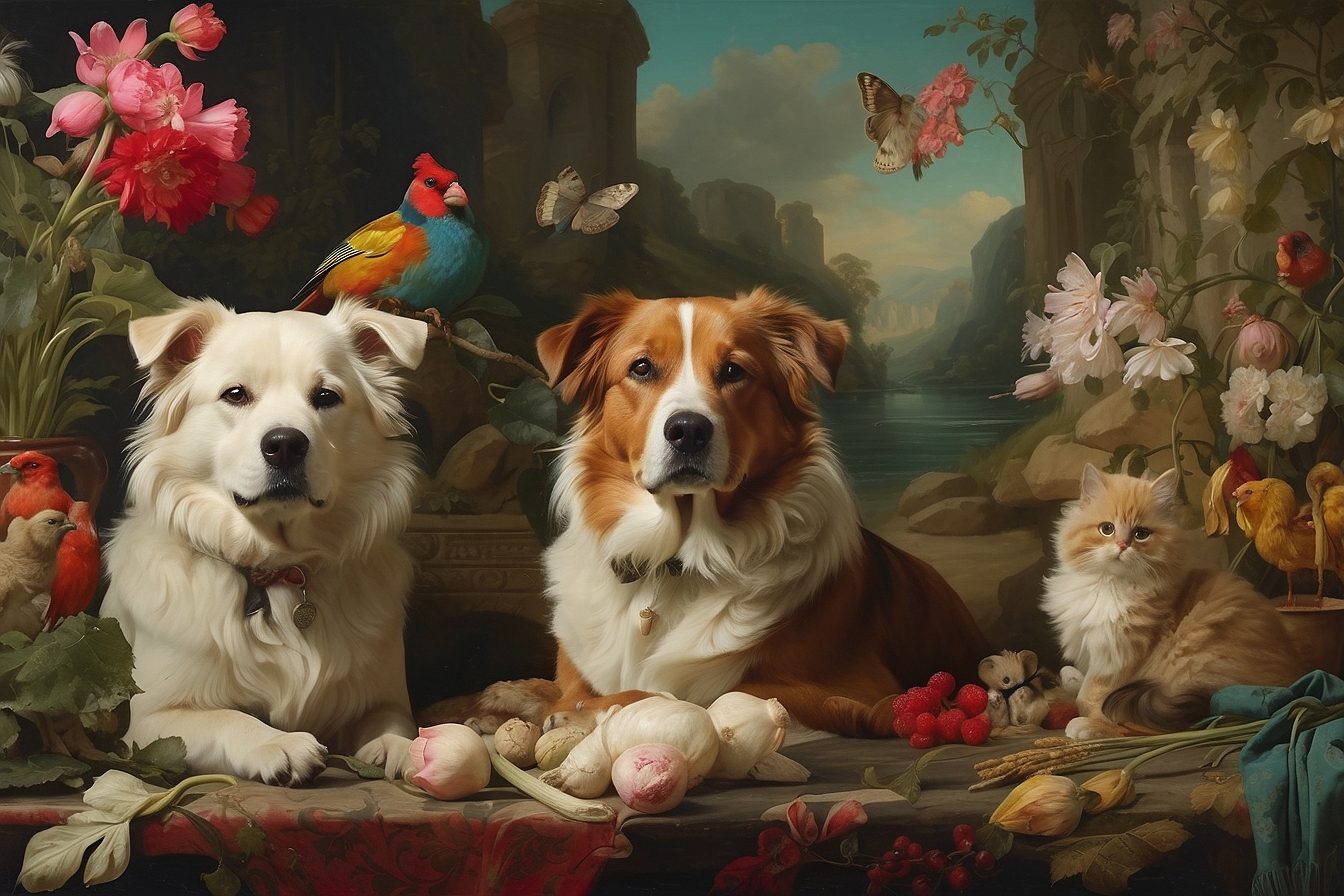The portrayal of pets in art has long been a fascinating exploration of the tension between two distinct approaches: animalism and anthropomorphism. These contrasting perspectives influence how artists represent pets, shedding light on the evolving relationship between humans and their animal companions. In this exploration, we delve into the dichotomy of animalism and anthropomorphism in the depiction of pets in art.
Animalism: Embracing the True Nature of Animals
Animalism in art focuses on portraying animals, including pets, in a manner that emphasizes their innate characteristics, behaviors, and natural environments. This approach seeks to capture the essence of animals without imposing human attributes or emotions onto them. It often emphasizes the wild and instinctual aspects of animals, even when depicting domesticated pets.
One notable example of animalism in art is George Stubbs’ painting, “Whistlejacket”, from the 18th century. This striking portrait of a horse showcases the animal’s power, beauty, and physicality. Stubbs’ meticulous attention to detail and anatomical accuracy epitomizes the animalist approach, presenting the horse as a magnificent creature in its own right.
Anthropomorphism: Projecting Human Qualities onto Pets
Anthropomorphism, on the other hand, involves attributing human characteristics, emotions, and intentions to animals, including pets. This approach invites viewers to connect with animals on a more emotional and relatable level by emphasizing the human-like qualities of pets. Anthropomorphic art often tells stories and conveys narratives that humanize animals, making them more accessible to our understanding and emotions.
A famous example of anthropomorphism can be found in the beloved children’s book character, Beatrix Potter’s Peter Rabbit. The mischievous and endearing Peter Rabbit exhibits human-like qualities, from wearing clothes to engaging in adventures, allowing readers to form a deep emotional connection with the character.
The Intersection of Animalism and Anthropomorphism
In many cases, art strikes a balance between animalism and anthropomorphism, acknowledging the complex nature of the human-pet relationship. Contemporary artists often explore this intersection, capturing both the natural behaviors of animals and the emotional bonds between pets and their owners.
One such artist is Ron Burns, known for his vibrant and expressive pet portraits. Burns’ artwork celebrates the individuality and quirks of pets while also conveying the deep connections they share with their human companions. His work encapsulates the essence of the modern approach to pet art, which recognizes the multifaceted nature of the human-animal relationship.
The tension between animalism and anthropomorphism continues to shape the way pets are depicted in art. It reflects our evolving understanding of the complex dynamics between humans and their animal companions. Whether we emphasize the innate qualities of pets or anthropomorphize them to relate on a more emotional level, the depiction of pets in art remains a powerful reflection of the enduring bond between humans and their furry friends.


